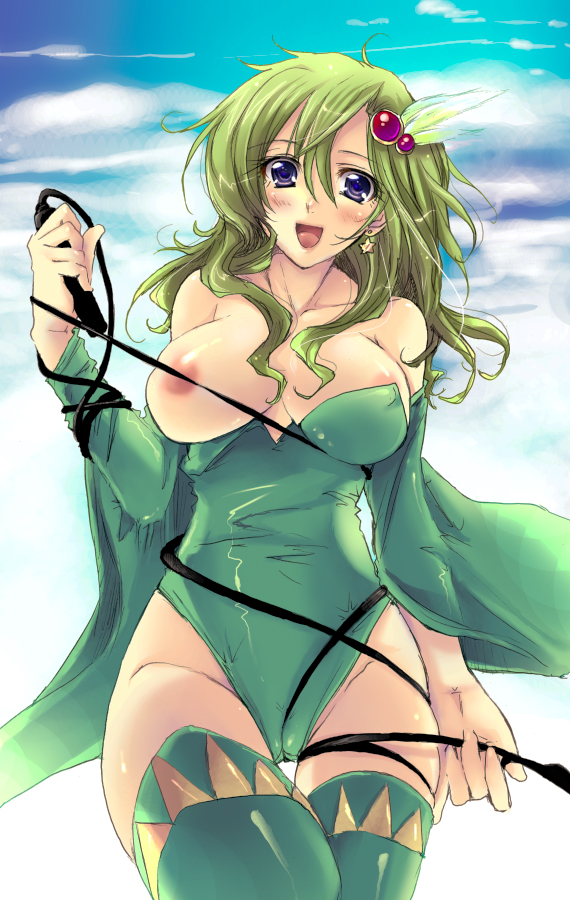Anyone who has played the first three Final Fantasy games, either on the NES or as reincarnated through their PSP and DS remakes, knows that there isn’t a great deal of character development involved. Male and female characters are more or less interchangeable; the gender of any given character is no more than window dressing for an essentially sexless data animal. Final Fantasy IV, the series’s first installment for the 16-bit Super Nintendo Entertainment System, is considered groundbreaking because it is the first of the games to feature a cast of characters with unique abilities, personalities, and backstories. The game follows the exploits of the dark knight Cecil, who has to (a) come to terms with the fact that he is working for an evil king, (b) overcome the darkness in his heart, (c) gain the holy sword necessary to fight evil, and (d) fly to the moon to defeat his evil brother and the dark force possessing him.
Cecil, who is your party’s fallback melee fighter, is supported by Rosa, one of those selfless white mage types who will do anything for Cecil but is all but useless in battle (at least until she learns the attack spell Holy). Despite all of the transformative and empowering fan work that has sprung up around her over the past twenty years, in the original game, Rosa was really nothing more than the love interest of Cecil and his rival Kain. Your party must repeatedly fight to save her from various conundrums, like fainting in the desert and being kidnapped. Much more interesting than Rosa, who is the proverbial sheath for the hero’s sword, is the summoner character Rydia.
Rydia is a young summoner whose village is unwittingly destroyed by Cecil. Since she has nowhere else to go after the entire race of summoners is killed, she accompanies your party until she is spirited away by a summon creature, Leviathan, to the city of summon creatures deep under the earth. When Cecil ends up traveling underground and finds himself in dire straights, he is rescued by Rydia, who has aged more than ten years while living in a different flow of time. Rydia is a valuable asset to your party, wielding whips that inflict paralysis and various other status ailments, as well as battle-ending summons and black magic so powerful that its use is depicted as killing other mages.
Since Rydia is so useful as a playable character, the player is given a strong incentive to go on several difficult side quests that serve no other purpose than to make her more powerful. The player therefore has something of a first-person investment in her, which is strengthened by her moving backstory. This backstory provides both a juxtaposition and an alternative to Cecil’s own. Both Cecil and Rydia are orphans who were raised to be masters of their respective powers, and both must make a choice regarding whom they will forgive and whom they will protect. Unlike Rosa, the adult Rydia does not need saving, and she is not interested in romantic love. It would seem that she is therefore not an object but rather a subject, a female hero who stands on equal footing with the male hero.
Unfortunately, there is the issue of her costuming. While the two primary male characters, Cecil and Kain, are allowed armor, Rydia is clothed in leggings, oversized arm warmers, a leotard, and high heels. Besides not being very practical for battle, this outfit is highly sexualized. As a result, fanworks from both Japan and America have cast the character as a porn star who is raped by not only Cecil and Kain but also by her summon monsters, a dubious honor that is not shared by Rosa.
This pornographic treatment is not merely a result of Rydia’s sexy costume (or of Rule 34), however. There is also an air of innocence and a whiff of child-in-a-woman’s-body about her that invite male protection and exploitation. While Cecil and Kain are depicted as undergoing emotional trails on the road to character development, Rydia has an almost complete lack of interiority. If the adult Rydia ever faces any doubt over her abilities or conflict over the fact that Cecil killed her entire family, for example, the player doesn’t hear about it. Rydia is magical and mystical and unknown; she is a blank slate in an appealing costume onto which the presumably male player can project his fantasies of exotic and mysterious femininity. Moreover, although Rydia’s magic is undeniably powerful, the game’s strict MP limitations ensure that she is never more than a support character in the vast majority of battles, an unfortunate caveat that also applies to Rosa.
In both the gameplay and narrative aspects of Final Fantasy IV, then, female characters are associated with magic, innate ability, dependence on men, and cheerful self-sacrifice, while male characters are associated with physical power, training and skill, and development toward emotional independence. The player is strongly encouraged to identify with the male characters and their personal struggles. The male is the subject, and the female is the object. The male is known and powerful, and the woman is unknown and mystical. These are popular fantasy tropes, and they are not unique to Final Fantasy IV, whose story is powerful and appealing partially because it makes effective use of these tropes.



